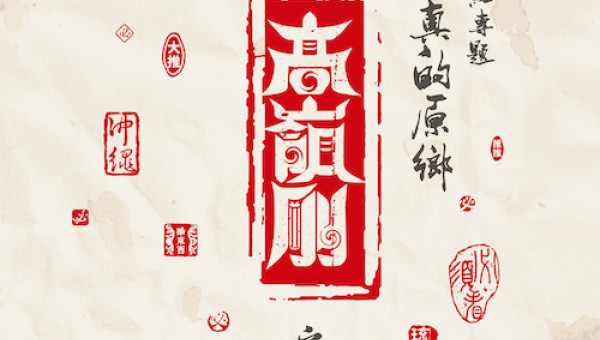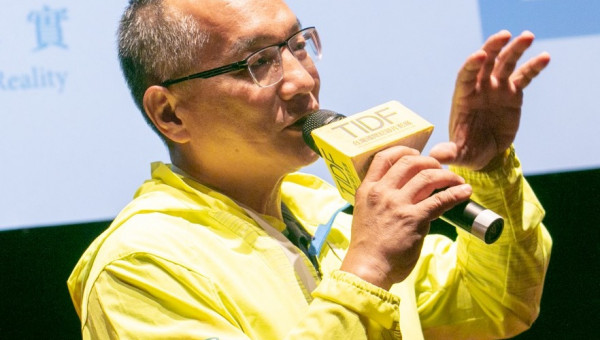ACCUMULATED OVER TIME, A DIVERSE, MATURE AND SEASONED LOOK EMERGES - OBSERVATION OF THE 14TH TIDF TAIWAN COMPETITION
The entries for this year’s Taiwan Competition are characterised by an overall diversity in terms of content and form, a tendency that remains consistent with the ever-expanding definition and boundaries of documentaries of today. Based on this diversity, the 15 titles that finally stood out represent a maturity based on extensive experience.
Speaking of ‘maturity based on extensive experience’, ‘time’ is the keyword in physiology and physics. Physiological time means age and the length of period spent in filmmaking. Except for only one younger nominee, all the nominees are in their forties and have extensive experience in filmmaking. While age and career length are not among the considerations for selection, these ‘spark-plug’ filmmakers in Taiwan’s documentary scene do offer eye-opening and refreshing results, and this year’s TIDF Taiwan Competition is arguably fruitful for the core generation of documentary-making in Taiwan.
The physical time is two-fold. The first aspect is about a key element of the documentary: accumulation over time. The majority of this year’s nominated works were shot over a period of up to several years or even, for some of them, over a decade or more. In terms of results, the viewpoints of these works are clear, and their stories shift among well-organised materials in an orderly way, demonstrating their mastery of interacting with their subjects and shooting and editing.
Surprisingly, a nominated work was created through ‘re-editing’ films shot and edited over a decade ago. Rather than partial, slight modifications, the approach is rather that of a total makeover, transforming the entire original into ‘another work’ by editing. The result is comparable to an extremely moving force bursting out after a quiet contemplation across a river of time. Even throughout the history of documentary film, such instances are probably rare.
The second aspect is duration. Of the 15 nominated works, only two last less than 60 minutes while others last for more than 60 minutes, with ten lasting for nearly 90 minutes (the longest film even lasts for almost five hours). Even for such durations, the finalists steadily hold the structure and pace like in a slow low-heat cooking, which partly explains the abovementioned traits of maturity based on extensive experience.
Among the entries this year, documentary shorts outnumber feature documentaries. However, these shorts are either obsolete or weak in their perspectives, despite their excellence in form and style; comparable to segments of a long documentary being contained in the space of a short, despite their expressiveness; or appear immature, despite the sparks in their conception. In comparison to previous editions which featured several exceptional shorts, only one short documentary is shortlisted this year. Despite being the youngest among all the finalists, its authors managed to carry the film with precision and proficiency, implying a promising development of young documentary filmmakers.
In terms of content, the entries involve a variety of issues. The shortlisted works cover issues ranging extensively from history, society, politics, culture, art, gender, family, migrant workers, and rare diseases to indigenous people. Arguably, the viewpoints of these Taiwanese documentary filmmakers allow the viewer to perceive certain situations of the contemporary world and even to change some previous ideas. Of these authors, some delve into new issues by following familiar forms and styles in which they are proficient, while others continue to expand new styles and forms for topics they have explored.
Like the variety of the issues covered by these entries, their styles and forms are also diversified, involving location shooting, archives, re-enactment, animation, environmental theatre, etc. Regarding location shooting, a larger proportion of the entries thus shot are based on ‘old media’ such as footage or digital video (DV). Such dominance is presumably driven by trends related to these media in recent years. However, only a few of these titles are mature and relevant (in terms of the ‘choice of the medium’). In terms of genre, each of the entries has its strength, ranging from documentary, feature, animation, experimentation, and video, and even to crossover/fusion of genres, corresponding to the ever-expanding definition and boundaries of documentaries of today.
Some of the nominated works are particularly unique and remarkable in style and form. Whether as fabricated reality, the fiction of reality, or integration of and infiltration between fiction and reality, these works represent persistent questioning and dialectics around TIDF’s core philosophy: ‘re-encounter reality’, while further expanding the soundscape/vision of Taiwanese documentary.
Moreover, in terms of production methods, ‘international co-production’ and ‘teamwork’ have flourished in recent years to dominate the submitted entries. Noticeably, several of the entries thus produced were shortlisted. Their results may serve as a cornerstone for filmmakers attempting similar approaches.
However, with the documentary production conditions in Taiwan developing towards maturity over the past ten years or more, ‘planning-based’ production has gradually emerged as the main professional documentary-making method, whereas ‘fieldwork-based’ shooting, a conventional, customary documentary approach in Taiwan proposed by scholar Lee Yung-Chuan over ten years ago (note) is rarely practised nowadays. Therefore, the few remarkable ‘fieldwork-based’ documentaries among this year’s nominated works are all the more precious; these documentary filmmakers not only opted for fieldwork but, painstakingly, chose overseas locations. Across temporal and spatial spans, the complicated relationships between and levels regarding them and their subjects/shooting locations thus unfolded gradually in front of the lens over time, which is particularly admirable.
In summary, the shortlisted works of this year’s TIDF Taiwan Competition hopefully not only reflect contemporary issues, dig and expand new forms and styles, but also respond to past documentary traditions and illuminate currently emerging documentary production trends in the country, opening and leading new paths to be explored by upcoming Taiwanese documentary filmmakers.
※Note: Lee Yung-chuan: ‘Among the documentaries made in Taiwan, too many of them only relied on customary long-term fieldwork’, quoted from the discussion for the final selection documented in the 2007 Taiwan Local Voice Film Festival brochure.
Translated by Sylvie LIN


